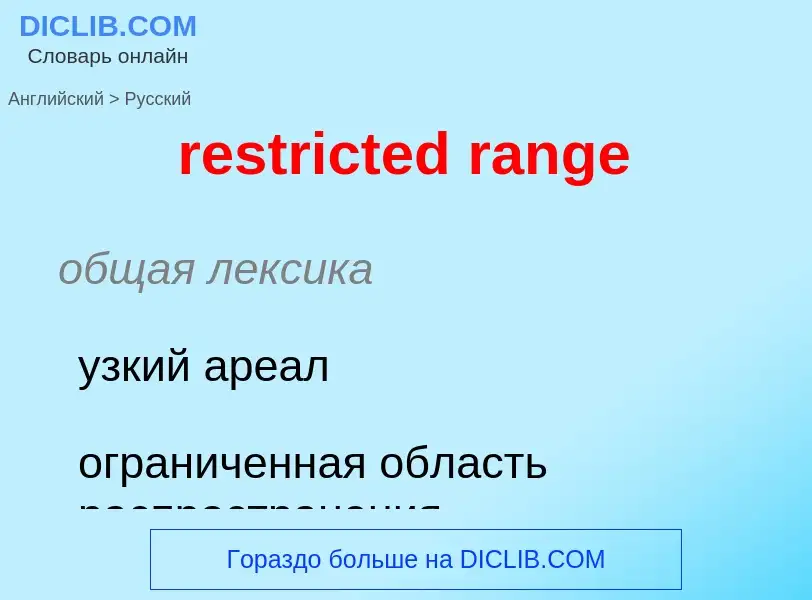Tradução e análise de palavras por inteligência artificial ChatGPT
Nesta página você pode obter uma análise detalhada de uma palavra ou frase, produzida usando a melhor tecnologia de inteligência artificial até o momento:
- como a palavra é usada
- frequência de uso
- é usado com mais frequência na fala oral ou escrita
- opções de tradução de palavras
- exemplos de uso (várias frases com tradução)
- etimologia
restricted range - tradução para russo
общая лексика
узкий ареал
ограниченная область распространения
[fri:'reindʒ]
прилагательное
сельское хозяйство
находящийся на свободном выгуле
Definição
Wikipédia
An Endemic Bird Area (EBA) is an area of land identified by BirdLife International as being important for habitat-based bird conservation because it contains the habitats of restricted-range bird species (see below for definition), which are thereby endemic to them. An EBA is formed where the distributions of two or more such restricted-range species overlap. Using this guideline, 218 EBAs were identified when Birdlife International established their Biodiversity project in 1987. A secondary EBA comprises the range of only one restricted-range species, or an area which is only the partial breeding range of a range-restricted species.
EBAs contain about 93% of the world's restricted-range bird species, as well as supporting support many more widespread species. Half the restricted-range species are threatened or near-threatened, with the other half especially vulnerable to the loss or degradation of their habitats because of the small size of their ranges. Most EBAs are also important for the conservation of other animals and of plants. Although they cover less than 5% of the world's land surface, their biological richness makes them high priorities for ecosystem conservation. The natural habitat of most EBAs is forest, especially tropical lowland forest and highland cloud forest, often comprising islands or mountain ranges, and varying in size from a few square kilometres to over 100,000 km2. Some 77% of EBAs lie in the tropics and subtropics.
- Restricted-range bird species
A restricted-range bird species is a term coined by BirdLife International in conjunction with the identification of Endemic Bird Areas. It is defined as a landbird (i.e. not a seabird) species which is estimated to have had a breeding range of not more than 50,000 km2 since 1800. It includes birds which have become extinct which qualify on the range criterion. It does not include birds which, although they meet the range criterion today, were historically (since 1800) more widespread.


![Baby free range [[chicken]] in the hand of a person in [[Ishwarganj Upazila]], [[Mymensingh]], [[Bangladesh]] Baby free range [[chicken]] in the hand of a person in [[Ishwarganj Upazila]], [[Mymensingh]], [[Bangladesh]]](https://commons.wikimedia.org/wiki/Special:FilePath/Baby Chicken in Ishawarganj, Mymensingh, Bangladesh.jpg?width=200)
![Small-scale free range farming in the [[Northern Black Forest]] Small-scale free range farming in the [[Northern Black Forest]]](https://commons.wikimedia.org/wiki/Special:FilePath/Busenbach Freilandhaltung-Hühner.jpg?width=200)

![Free range ducks in [[Hainan]] Province, China Free range ducks in [[Hainan]] Province, China](https://commons.wikimedia.org/wiki/Special:FilePath/Duck farm in Hainan 02.jpg?width=200)
![geese]] in Germany geese]] in Germany](https://commons.wikimedia.org/wiki/Special:FilePath/Kirbachhof Gaense.jpg?width=200)

